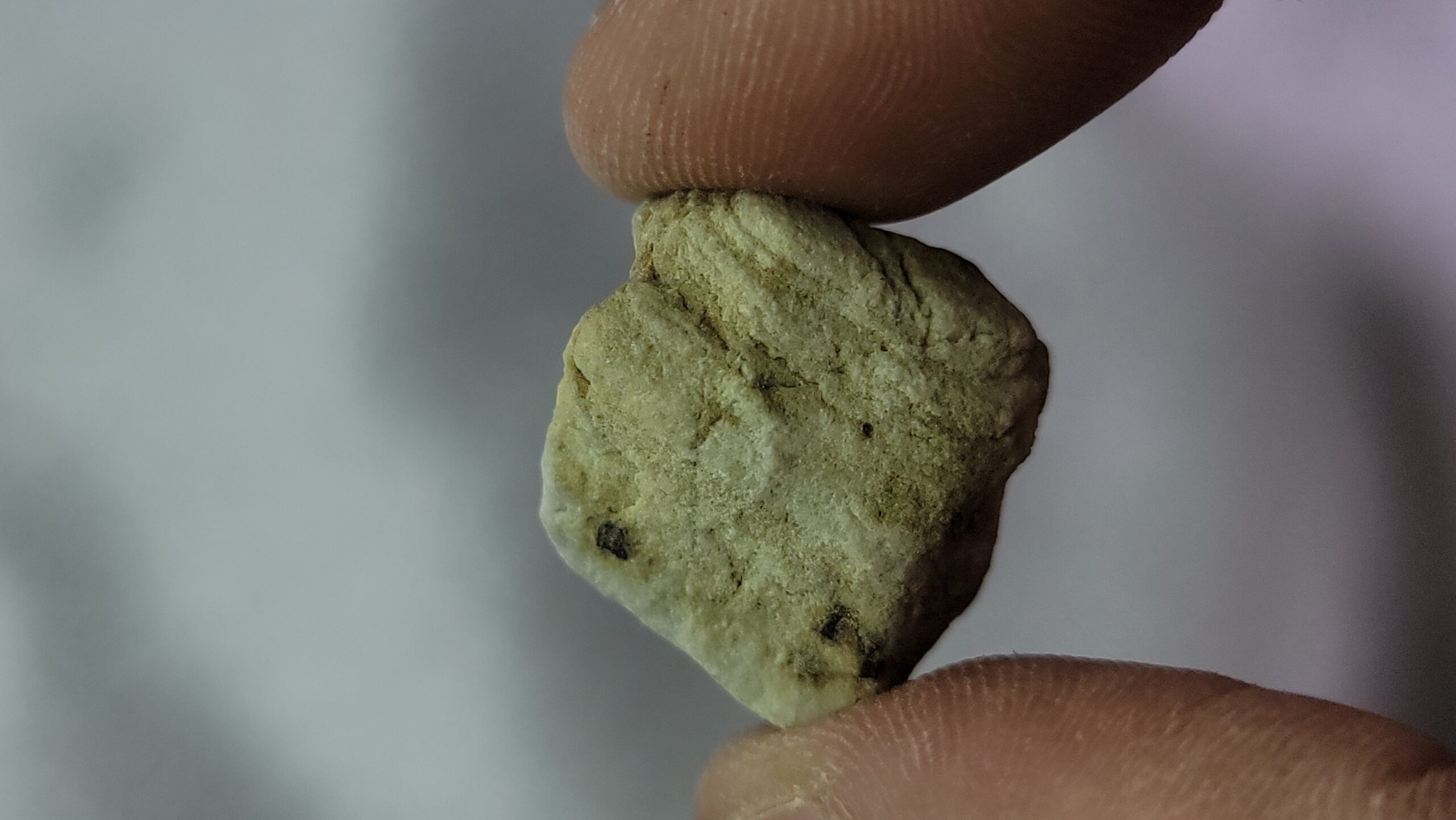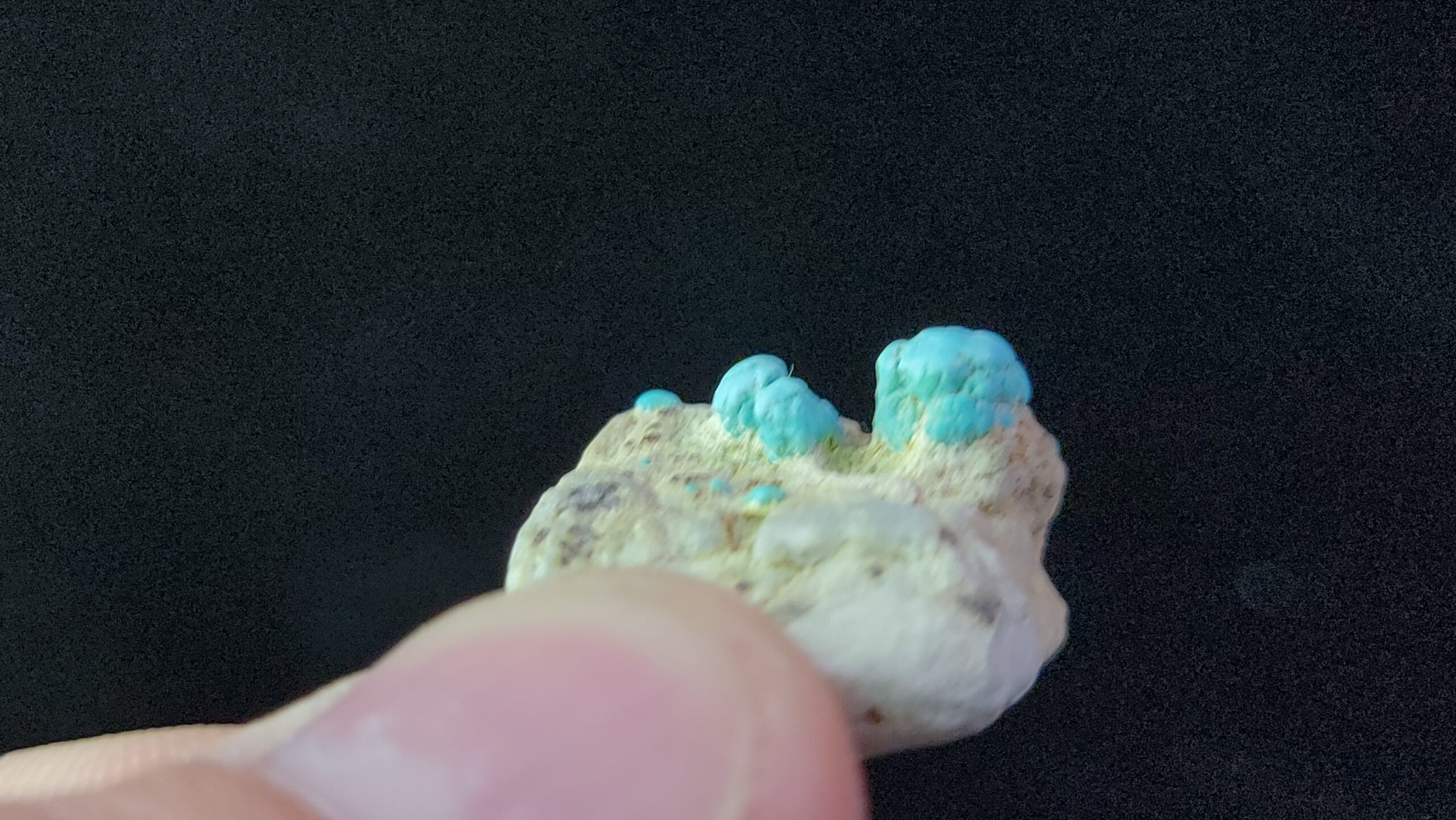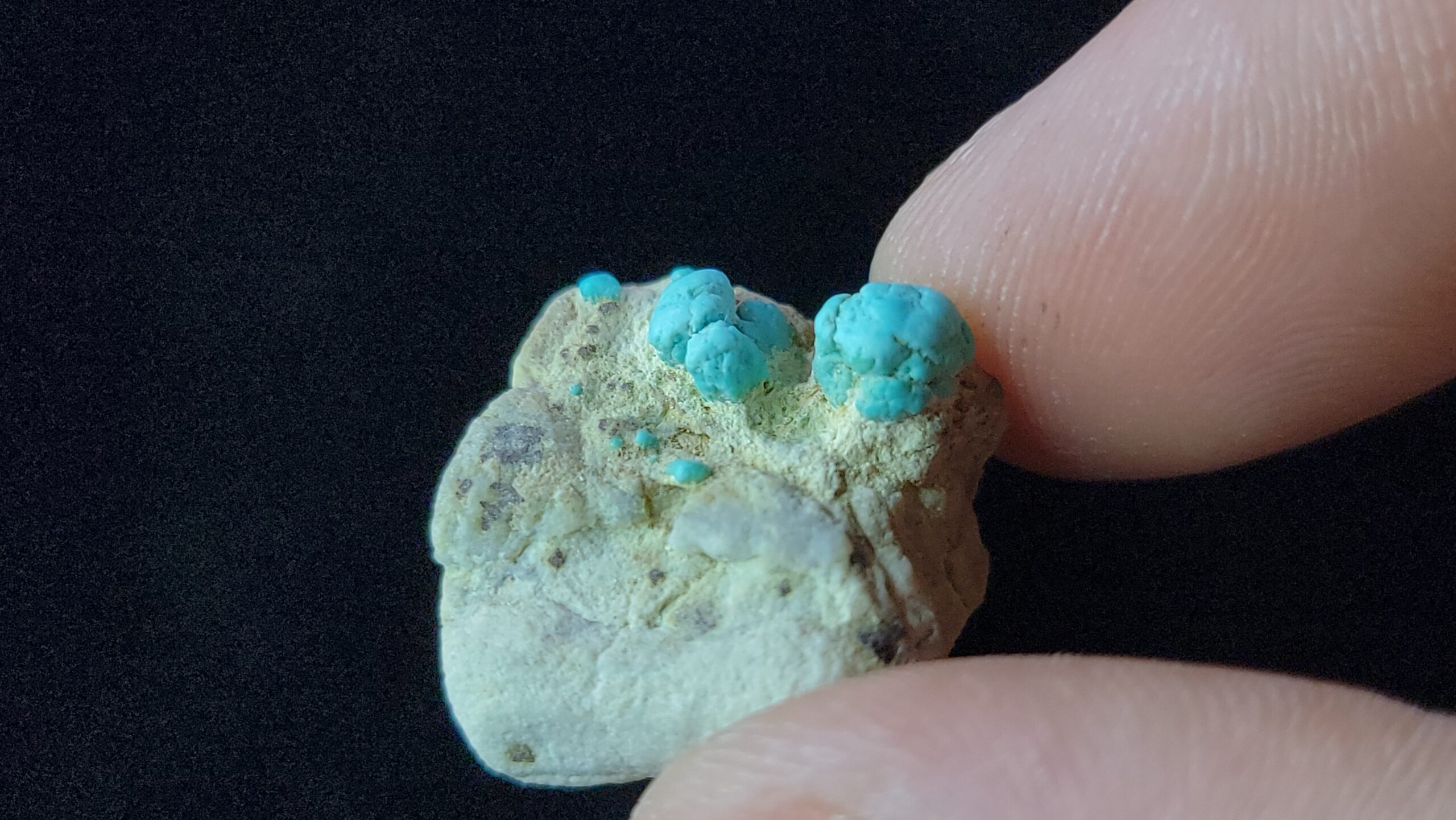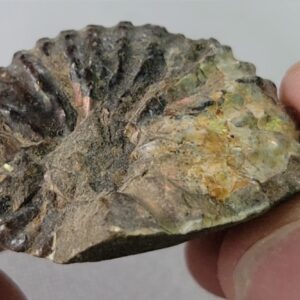Description
Turquoise has a hardness of 5 – 6 and a specific gravity of 2.6 – 2.8. Named from the French “turques” or “turquois” meaning “Turkish” as the original material was found on the south slopes of the Al-Mirsah-Kuh Mountains in Iran, but then which found its way to Europe via Turkey. The name was known at least as early as the 17th century C.E.. According to Mindat, “Turquoise and members of its group were redefined by Foord and Taggert in 1998, with turquoise reserved for an end-member composition. Foord and Taggert (1998) also noted that most of the gem material labeled “turquoise” is inhomogeneous and that planerite is the most common constituent in commercial “turquoise”.”
According to Wikipedia, “In many cultures of the Old and New Worlds, this gemstone has been esteemed for thousands of years as a holy stone, a bringer of good fortune or a talisman. The oldest evidence for this claim was found in Ancient Egypt, where grave furnishings with turquoise inlay were discovered, dating from approximately 3000 BCE. In the ancient Persian Empire, the sky-blue gemstones were earlier worn round the neck or wrist as protection against unnatural death… The goddess Hathor was associated with turquoise, as she was the patroness of Serabit el-Khadim, where it was mined. Her titles included “Lady of Turquoise”, “Mistress of Turquoise”, and “Lady of Turquoise Country”… In Western culture, turquoise is also the traditional birthstone for those born in the month of December. The turquoise is also a stone in the Jewish High Priest’s breastplate, described in Exodus chapter 28. The stone is also considered sacred to the indigenous Zuni and Pueblo peoples of the American Southwest. The pre-Columbian Aztec and Maya also considered it to be a valuable and culturally important stone.”
Its history and value is easy to understand, as this is an exceptionally rare color in nature. While this would make for a great sample for element collectors looking to get some Copper, Aluminum, Phosphorus, Oxygen or Hydrogen as those elements are found in nature, there are also other specimens that aren’t quite as expensive, as this is also valued by mineral collectors and many others for much more than just its elemental composition! This specific specimen is pretty small and only has a couple blebs of botryoidal Turquoise, but some Turquoise can sell for quite a bit, as two Turquoise necklaces recently sold on eBay for $75,000 each!
Turquoise is pretty prominent in the American Southwest, as Arizona and New Mexico have some of the most in both shear quantity of all specimens overall, and in the amount of quality specimens. Found in around 600 known localities worldwide, around 333 in the US, and ~18 in Colorado alone, typically in small veins of partially decomposed volcanic rock in arid climates. So, if you just so happen to be hiking in copper deposits in arid environments, be sure to keep your eye out for a cool, blue rock like this and you might just discover your very own Turquoise!






















Reviews
There are no reviews yet.